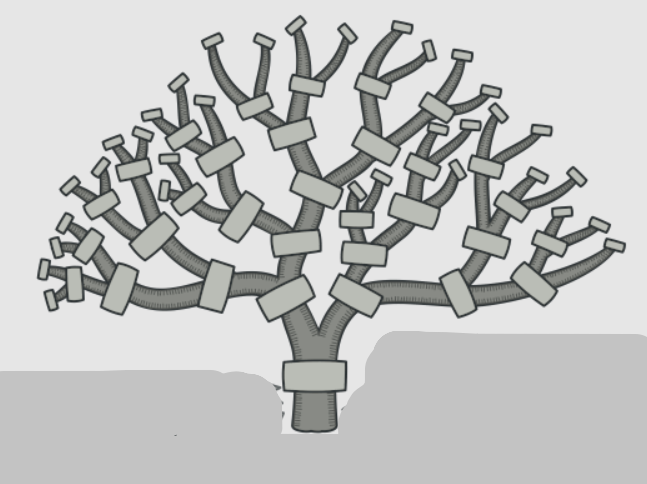说实话,我也没想到这个模式能在哪里运用上,暂时只是Demo理解阶段。
What is Composite Pattern
Composite Pattern(组合模式)也叫叉数、对象树、Object Tree、...。它的思想很类似自然界的树状结构。

树状结构很有意思的地方在于,每个树枝都是一样的,甚至叶子和树枝都是一样的,区别只是在于树叶下面没有树叶了。
组合模式就是借鉴了这个思想,它允许将对象组合成树状结构,并以统一的方式处理对象及对象组合。组合模式使得客户端可以一致地对待单个对象和对象组合,无需区分它们的差异。
关键要素
- leaf and branch interface
- leaf
- branch
- Client
Example —— 读取文件夹和文件
假设我们要设计一个文件系统的结构,包括文件和文件夹。文件夹可以包含文件和其他文件夹,而文件没有子组件。我们可以使用组合模式来实现这个文件系统结构。
leaf and branch interface
public interface FileSystemComponent {
void showInfo();
}
leaf and folder
public class File implements FileSystemComponent {
private String name;
public File(String name) {
this.name = name;
}
public void showInfo() {
System.out.println("File: " + name);
}
}
public class Folder implements FileSystemComponent {
private String name;
private List<FileSystemComponent> components;
public Folder(String name) {
this.name = name;
this.components = new ArrayList<>();
}
public void addComponent(FileSystemComponent component) {
components.add(component);
}
public void removeComponent(FileSystemComponent component) {
components.remove(component);
}
public void showInfo() {
System.out.println("Folder: " + name);
for (FileSystemComponent component : components) {
component.showInfo();
}
}
}
Client
public class Client {
public static void main(String[] args) {
// 创建文件和文件夹
FileSystemComponent file1 = new File("file1.txt");
FileSystemComponent file2 = new File("file2.doc");
Folder folder1 = new Folder("Folder 1");
Folder folder2 = new Folder("Folder 2");
// 组合文件和文件夹
folder1.addComponent(file1);
folder1.addComponent(file2);
folder1.addComponent(folder2);
// 显示文件系统结构
folder1.showInfo();
}
}
out :
Folder: Folder 1
File: file1.txt
File: file2.doc
Folder: Folder 2
通过组合模式,我们可以将文件和文件夹组织成树状结构,使用统一的方式处理它们。
客户端可以递归地遍历文件系统的组件,无需关心是单个文件还是文件夹。这样,组合模式提供了一种灵活且可扩展的方式来处理对象的组合关系。
Example —— 统计城市人口数
这个案例不是那么恰当。令人费解!
interface
public interface Counter {
int count();
}
leaf
public class Leaf implements Counter {
private int sum = 0;
public Leaf(int sum) {
this.sum = sum;
}
@Override
public int count() {
return sum;
}
}
Branch
public class Branch implements Counter {
private List<Counter> counterList = new ArrayList<>();
public void add(Counter counter) {
counterList.add(counter);
}
public void delete(Counter counter) {
counterList.remove(counter);
}
public List<Counter> getChild() {
return counterList;
}
@Override
public int count() {
int sum = 0;
for (Counter counter : counterList) {
sum += counter.count();
}
return sum;
}
}
Client
public class Client {
public static void main(String[] args) {
System.out.println("开始统计人数");
Branch nation = new Branch();
nation.add(new Leaf(100)); // 模拟国家下 —— 直辖市1
nation.add(new Leaf(200)); // 模拟国家下 ——— 直辖市2
Branch region = new Branch();
region.add(new Leaf(300)); // 模拟国家下 —— 区1
region.add(new Leaf(400)); // 模拟国家下 —— 区2
nation.add(region); // 区加入国家
System.out.println(nation.count()); //1000
}
}
- Composite Structure Pattern Classcomposite structure pattern class structure builder pattern class composite pattern模式 composite pattern entity 28 composite pattern cpp composite pattern typesciprt composite pattern behavioral template pattern class creational singleton pattern class creational factory pattern class